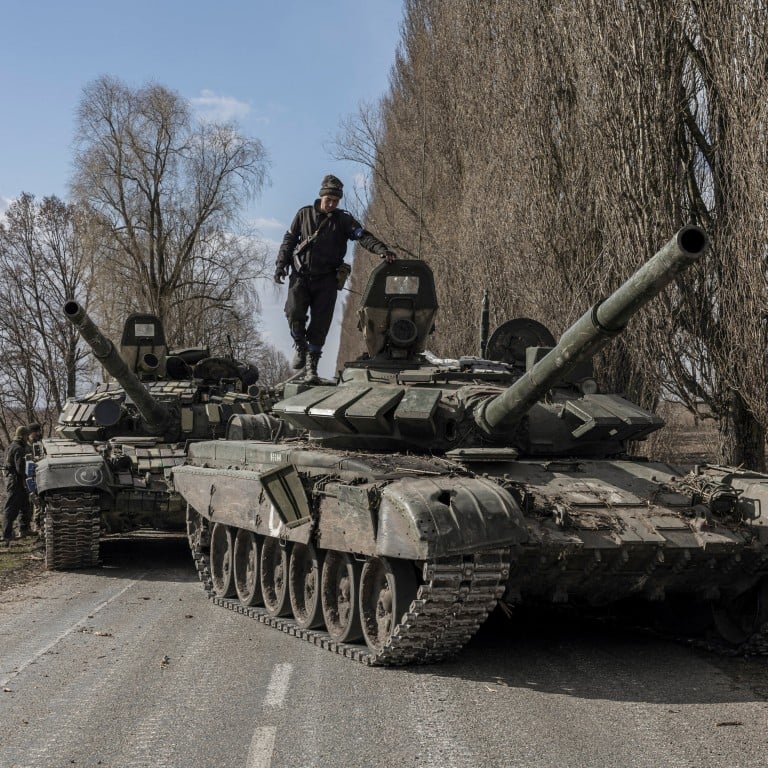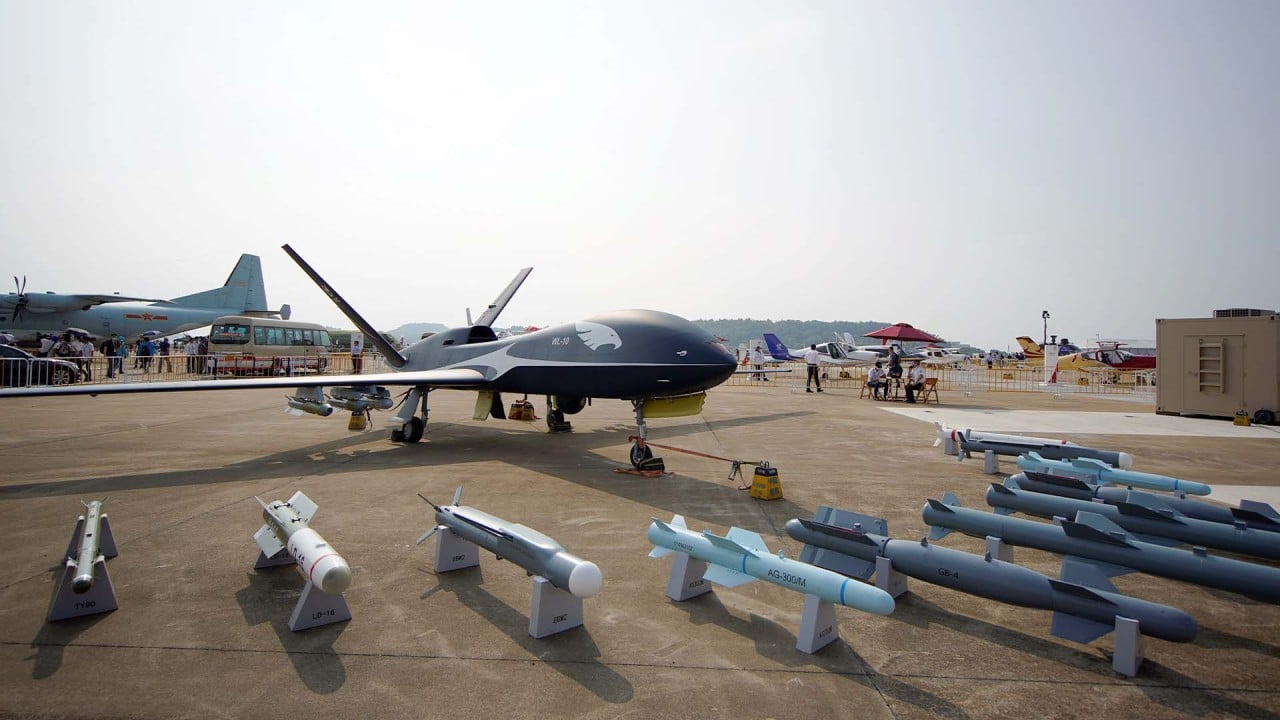
Explainer | Why Chinese military eyes will be on Ukraine test for Switchblade tank killer drones
- The latest Switchblade-600s donated by the US have several counterparts made in China, where their effectiveness will be watched with interest
- The Switchblades are portable and easy to operate, but a military expert says they are vulnerable to jamming like other small drones
The Switchblades have been designed to hover over a battlefield and search for targets, which they can hit with missile-like built-in warheads. They can be carried and operated by small teams, or even individual infantry soldiers.
The 300 model weighs just 2.5kg (5.5lbs) and fits in a backpack, while the larger and heavier Switchblade-600 carries a warhead powerful enough to destroy a tank, at a fraction of the cost of a missile with similar power.
According to manufacturer AeroVironment, the two models have a flying time of 15 and 40 minutes, respectively, and ranges of 10km and 40km.
Their electric engines make them almost silent and both models can be switched from preprogrammed flight to manual control via a touchscreen tablet. They can also abort an attack and re-target up to the last second.
The Switchblade-300 was first deployed in Afghanistan in the 2010s, where they were used to target the Taliban.
Beijing-based military commentator Zhou Chenming said the use of the Switchblade-600s in the Ukraine conflict was an opportunity to observe their performance against Russian tanks.
“The Switchblades are easily portable and operable – and hidden. So they could greatly improve the firepower and attack range of small infantry squads, especially in special tactical uses,” he said.
“But like small drones, they are not difficult to jam or spoof. In a mass deployment scenario, the credibility of the data control and communication also remains a question.”
China has at least five drones similar to the Switchblades, developed by both state-owned corporations and private companies. Most notable is the CH-901 which has been on display at several defence shows since 2016.
A product of state-owned China Aerospace Science and Technology, the CH-901 is similar to the Switchblade in appearance, with wings and tail that fold into the launch tube and expand after firing. It can be operated from individual tubes in the ground or fitted to a vehicle in multiple packs.
Compared to the 1.3-metre long Switchblade-600 which weighs 22kg, the CH-901 is lighter at 9kg but only slightly shorter, measuring 1.2 metres. The Chinese drone has a cruising speed of 70km/h and can reach a maximum of 150km/h.
This contrasts with the Switchblade-600’s 110km/h cruise travel and top speed of 185km/h.
But while the Switchblade-600 can be used just once, the CH-901 can be recovered and reused up to 20 times, making it closer to a regular drone. It also has a longer endurance time of up to two hours, with a photoelectric pod capable of carrying out reconnaissance over 2km.
Another example of China’s advancing drone technology is the Guide S570, which was shown in 2018 at the country’s premier Zhuhai air show.
Developed by Wuhan Guide Infrared Co, the S570 is similar in appearance to Israel’s Hero-30 loiter munition. It has an operational range of 10km and a lethal blast range of 8 metres.
The 7kg S570 is easy to carry and can be launched during both day and night, with its infrared and optical guidance systems. It can fly for up to 25 minutes.
The ZT-25, developed by Shaanxi Zhongtian Rocket Techonology Co, also has a similar look and specifications to the Hero-30, but can be launched from a large combat drone.
Other major Chinese weapons manufacturers which have produced their own suicide drones are the state-owned China Aerospace Science and Industry Corporation and Norinco.


